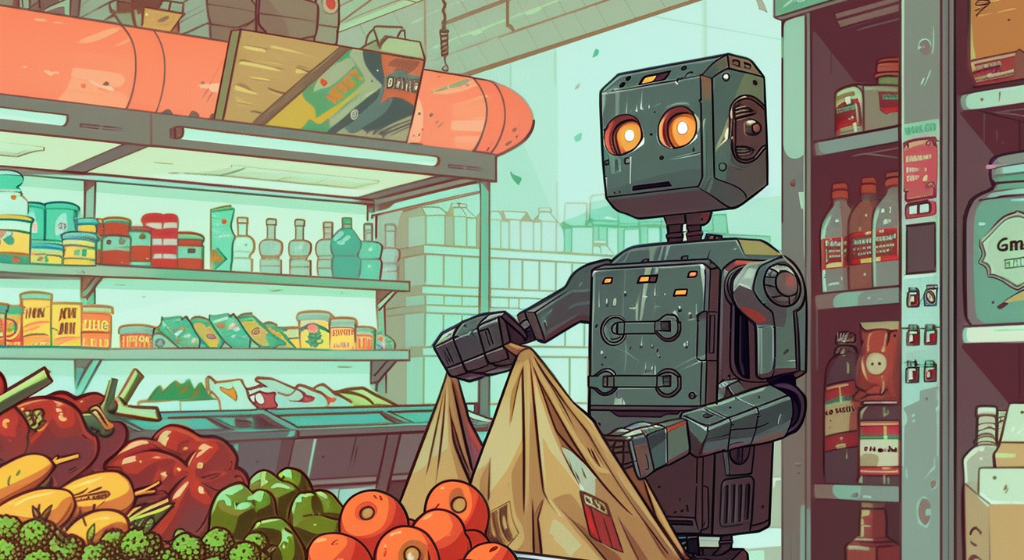
MIT’s CSAIL department is showcasing RoboGrocery, which combines computer vision with a soft robotic gripper to bag items, demonstrated by placing 10 unknown objects, ranging from delicate grapes and bread to solid soup cans and ice cream containers. (Source: Image by RR)
Robotic Bagging System Demonstrates Precision and Delicacy in Packing
MIT’s CSAIL department has developed a soft robotic system called RoboGrocery, designed to pack groceries by combining computer vision with a soft robotic gripper. This innovation follows the trend of increasing automation in grocery stores, which began with the installation of the first self-checkout system in 1986 at a Kroger store near Atlanta. Over the decades, self-checkout technology has become widespread across the U.S., and RoboGrocery aims to further streamline the grocery experience by potentially introducing robotic baggers in the near future.
To test RoboGrocery, researchers placed 10 diverse items, unknown to the robot, on a grocery conveyor belt. These items, as reported in techcrunch.com, included delicate products like grapes, bread, kale, muffins, and crackers, as well as more robust ones like soup cans, meal boxes, and ice cream containers. The system first uses computer vision to detect and assess the size and orientation of each item on the belt, initiating the bagging process with precision.
When the robotic gripper handles the grapes, pressure sensors determine their delicacy, ensuring they are placed gently and not at the bottom of the bag. Conversely, the robot recognizes the rigidity of a soup can and positions it at the bottom, showcasing its ability to pack items thoughtfully. This intelligent sorting mimics the careful considerations that human packers must make, preventing delicate items from being crushed under heavier ones.
Annan Zhang, one of the study’s lead authors, highlighted that while RoboGrocery is not yet ready for commercial deployment, it represents a significant step toward integrating soft robotic systems with multiple sensing modalities. The team acknowledges the need for improvements in the grasper and imaging system to enhance packing efficiency further. As the technology advances and becomes more robust, it could be scaled beyond grocery stores into industrial settings like recycling plants, expanding its utility and demonstrating the versatile potential of robotic systems in various real-world applications.
read more at techcrunch.com







Leave A Comment